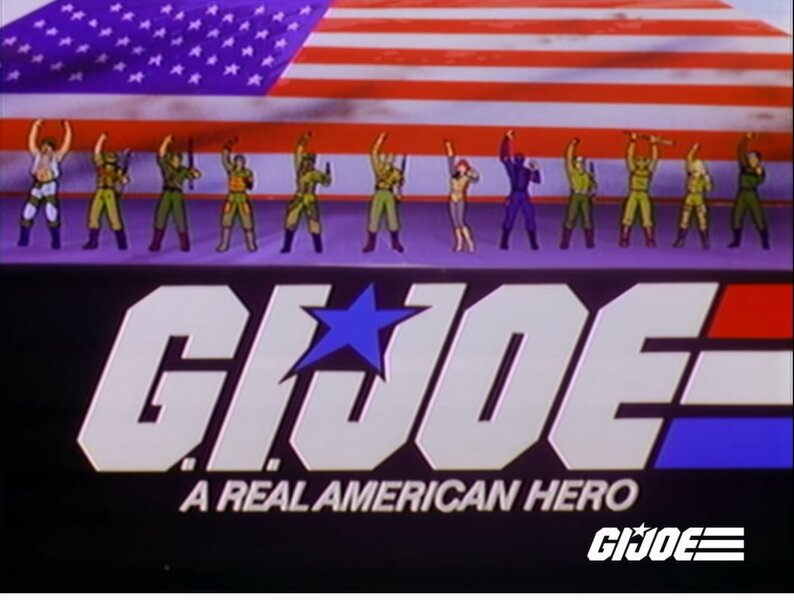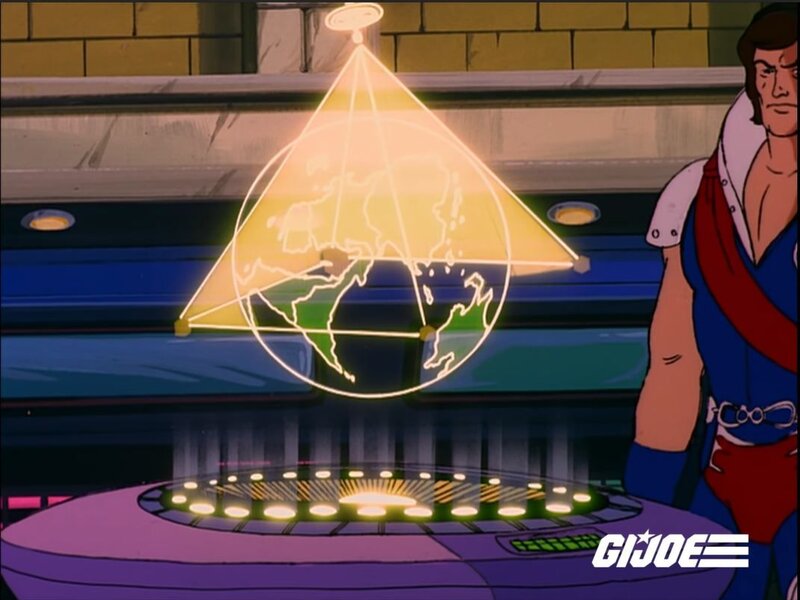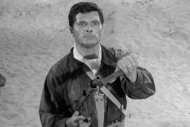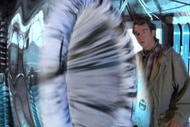Create a free profile to get unlimited access to exclusive videos, sweepstakes, and more!
G.I. Joe: A Real American Hero, now on YouTube, is way more bonkers than you remember
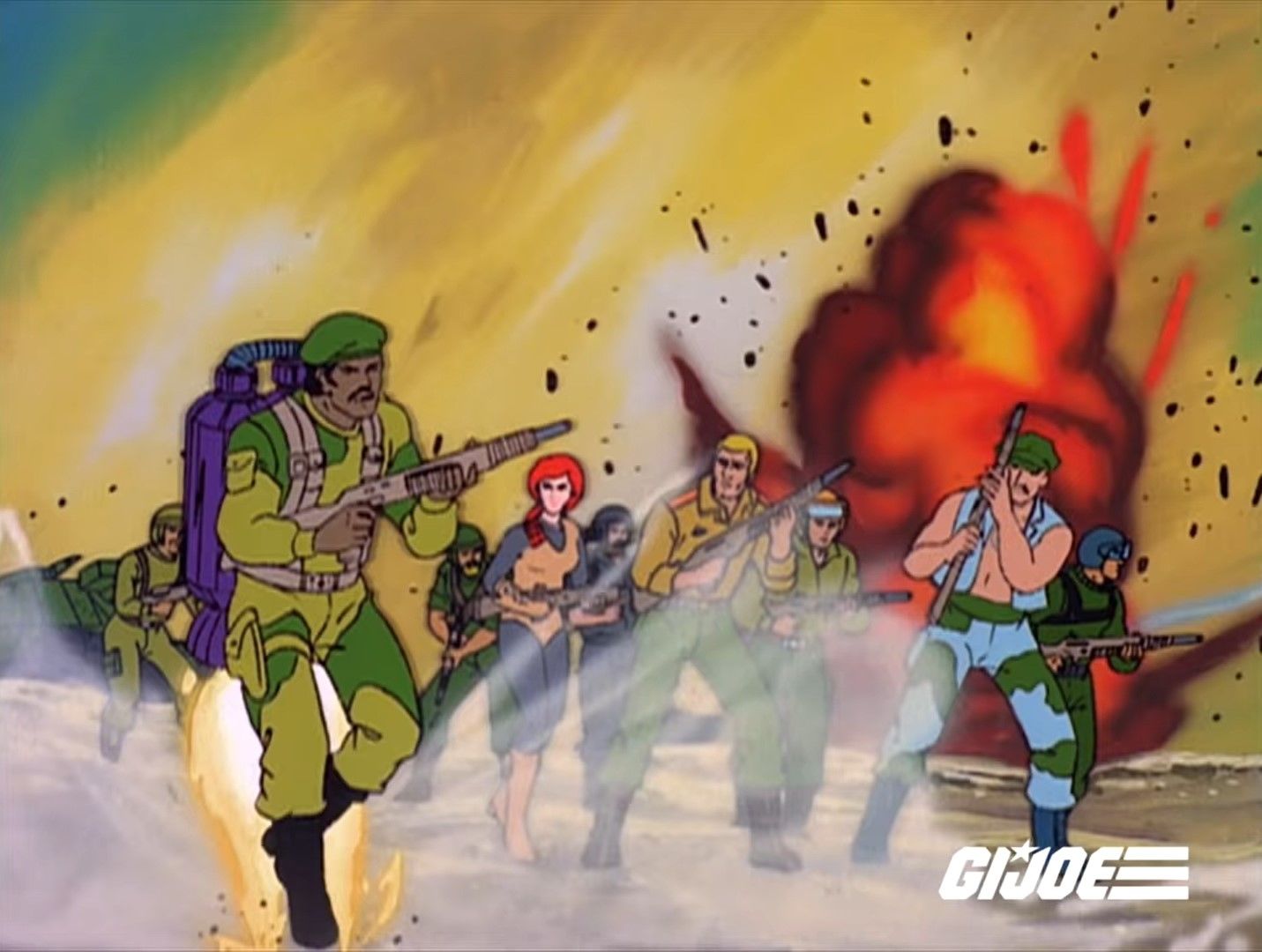
Knowing full well that this is the time to catch up on many hours of quality television, Hasbro's YouTube channel just dropped a treasure trove of classic episodes of G.I. Joe: A Real American Hero, the cartoon that every pre-adolescent boy in America set their afternoon snack by. (Or at least every kid in my Cold War-era elementary school.) And then after the show (and the one after it, Transformers), we'd all go play with our G.I. Joe action figures (you know, the ones with the Kung Fu Grip) and their increasingly sophisticated weapons of war until dinner, and then read the G.I. Joe comic books 'til we fell asleep.
If you're similarly lured to the glowing nostalgia of such simpler, jingoistic times — when right and wrong were as obvious as Joe vs. Cobra (take that, HYDRA) — then we welcome you to head on over to Hasbro YT to check out the first 15 episodes of the series. The life-changing show (at least this life) actually came about due to the popularity of Marvel Productions' animated 30-second commercials for Hasbro's 1982 G.I. Joe: A Real American Hero toy line, which launched in conjunction with the Marvel Comics series from the great Larry Hama.
Here, we dive into the wild nostalgia of G.I. Joe: A Real American Hero, while offering up a quick intro to the uber popular series, and the three bonkers 5-part story arcs that kicked it all off.
The animated series came from Sunbow Productions and Marvel Studios, and was created by Ron Friedman, a real American hero in his own right, having also penned Transformers: The Movie. It premiered in 1983 to promote the initial lineup of toys as a five-part miniseries that eventually became known as The M.A.S.S. Device arc. In 1984, another five-part arc, The Revenge of Cobra, launched with a new wave of toys, followed by a third five-parter, The Pyramid of Darkness, which kicked off the official 55-episode order of Season 1 in 1985, and integrated ever more Joes and their vast array of new, must-have merchandise.
Though these three early mini-series are missing the stock PSA words that we all came to live by in subsequent stand-alone shows — that knowing is half the battle — at least you can get the other half here. Honestly, you don't need much more than the theme song at the beginning of each episode to kick that comforting nostalgia into high gear, but whether you're a savvy vet or just living through these episodes for the first time, you might need a bit of a primer as to what ridiculous world-ending plot Cobra is implementing, and who the major players are both thwarting and throwing said plots.
Perhaps only then can we examine why these Cold War relics are still viable entertainment nowadays...
THE M.A.S.S. DEVICE
As you may have guessed, the action here centers around the M.A.S.S. Device, a bonkers matter-transporter that could compete with the best of sci-fi MacGuffins. It was capable of, among other tricks, zapping whole army squadrons and transporting them around the world. The majority of the action deals with a global race for three ultrarare catalytic converters that gas up the device, held between G.I. Joe — "America's daring, highly trained special mission force" (per the rocking and informative theme song) comprised of the most individualistic and specialized soldiers imaginable — and Cobra, "the ruthless terrorist organization" led by the ssssssssslithering Cobra Commander, who impetuously dreams up more global takeover schemes than The Brain.
Right off the bat, we're introduced to the series' main players on the deck of an airstrip, where there doesn't seem to be much of an issue with folks just walking around amongst the screaming Skystriker jets. Duke, the Joes' cornfed perfect-human leader, is talking to Stalker — the team's OG ranger and first recruit, who, before joining the Army, was an OG "warlord of a large urban street gang" (according to his 1982 file card on the back of his action figure, via The Ultimate Guide to G.I. Joe) — and Snake Eyes, the first Joe to get his own movie (please let it be good) and the coolest ninja in the only-cool-cats-allowed ninja game.
They're soon joined by Scarlett, who was never afraid to bring a crossbow to a machine gun fight. Immediately, the heat between Duke and Scarlett is palpable. But there's work to be done, Cobra is slithering, and just when the tarmac really starts to torch, they strike. We're introduced to major player Major Blood, a one-eyed, thinly mustachioed, poetry popping mercenary who's leading a strike against the new Skystrikers. The Joes fight it off, but Duke lets everyone know, "Cobra's up to something big!"
With no shortage of melodrama and dead-on dialogue, we are soon shown just what that something is, thanks to Destro's appearance at Cobra Commander's lair, the Cobra Temple, which comes complete with a cobra head throne. Because bad guys wear masks in this world, both Cobra Commander and Destro cover up; CC dons a silver shielded helmet or, when he's relaxing, a hood while Destro, a nefarious arms dealer and developer heading the Military Armament Research Syndicate, prefers to completely wrap his head in Beryllium steel, a tradition in his family dating back 20 generations of arms dealers.
We also meet the intelligence officer Baroness, the real power player behind Cobra, who has the wits, cunning, and disarming beauty to make both Cobra Commander and Destro spill all their nefarious secrets. Until Storm Shadow, Zartan, and Serpentor join the party later on in the series, those are pretty much the main Cobra players, other than all those expendable blue guys sent into the fire, only to parachute to safety after getting shot down.
On the Joe side, The M.A.S.S. Device also introduces us to a number of series mainstays, including communications specialist, Breaker; supermodel turned greased monkey, Cover Girl; mean and sleeveless Cajun Marine, Gung Ho; Snake Eyes' mostly wild wolf, Timber; ace helicopter pilot and rootin'-tootin' cowboy, Wild Bill; heavy machine gun-wielding, Malibu-born bass slapper, Rock n' Roll; tech wiz and laser weapons specialist, Flash; accident-prone bomb disposer, Tripwire; and most importantly (at least to anyone who grew up on the slopes in Colorado), Snow Job, the ski soldier.
Of course, like every Joe story in the Real American Hero series, by the end of The M.A.S.S. Device's five episodes — "The Cobra Strikes," "Slave of the Cobra Master," "The Worms of Death," "Duel in the Devil's Cauldron," and "A Stake in the Serpent's Heart" — the Joes save the day to the overwhelming chorus of "Yo Joe," even though Cobra slithers away, beaten, but emboldened to come up with a new world-dominating scheme.
THE REVENGE OF COBRA
And so we arrive at the second five-episode arc, The Revenge of Cobra, comprised of "In the Cobra's Pit," "The Vines of Evil," "The Palace of Doom," "Battle on the Roof of the World," and "Amusement Park of Terror." Hailing from the glorious flag-waving year of 1984, and yet again pitting Joe vs Cobra in a big game of weaponized Amazing Race, it's a winner-takes-all global grab to recover the scattered remnants of Cobra's high-tech, laser-core-powered, hydro-mastered, ion-correlated, weather-controlling weapon, the Weather Dominator. As the name suggests, it enables Destro and Cobra to "dominate the weather anyplace on Earth." Yeah, it gets cataclysmic.
As you can see right at the new intro, we're dealing with a whole host of new good guys and bad guys, and a slew of well-designed weapons of war — the Sky Hawk, V.A.M.P. Mark II, P.A.C./R.A.T., A.S.P., Chameleon swamp skier... — which any fan will recognize from the toy line.
Of the new Joes, probably the most important is rhyming Roadblock, as made famous by The Rock in the films, who literally steps into Stalker's spot in line in the intro, situating himself alongside Duke, Scarlett, and Snake Eyes (looking a whole lot more strong, silent, and deadly in this arc). We also get the likes of Flint, the unit's field leader (and a former Rhodes scholar), who wears a beret better than any Parisian; his lady Lady Jaye, a cunning linguist and master of disguise; Mutt and his mutt, Junkyard (not to be confused with the WWF's Junkyard Dog); and Spirit, the team's first Native American representative, and his pet eagle, Freedom.
This is where Cobra begins to really level up, as we meet chameleon-sensitive Zartan; his Droog-like biker gang cohorts, the Dreadnoks: Buzzer, Ripper, and Torch, all wielding name-appropriate weapons; Firefly, who took the prize for coolest camouflage; and, of course, Storm Shadow, the white ninja with a mysterious connection to Snake Eyes, and the second coolest ninja in the coolest game in town (and the reason I collected throwing stars as an unsupervised youth).
THE PYRAMID OF DARKNESS
And finally, kicking off the actual Season 1 show order, we get the final five-part arc, 1985's The Pyramid of Darkness, featuring "The Further Adventures of G.I. Joe," "Rendezvous in the City of the Dead," "Three Cubes to Darkness," "Chaos in the Sea of Lost Souls," and "Knotting Cobra's Coils."
The action revolves around Cobra hijacking Space Station Delta in order to link it to four "control cubes" strategically placed at the four corners of the earth, forming the Pyramid of Darkness, the "most powerful weapon in history," under which no electrical energy source can function. Once they get those control cubes set up, "Cobra shall rule forever" promises Cobra Commander, while unleashing one of his signature evil laughs.
Again, the intro is a tell as to what newcomers and new machinery we'd soon all have to go buy at Toy 'R' Us. On the Cobra side, the main newbies are the Crimson Guard Commanders, creepy twins Tomax and Xamot, who have a disturbing habit of finishing each other's sentences.
On the Joe front, among many important others, we get mountaineering specialist Alpine (another Colorado mountain boy favorite); Shipwreck, the ahoy-matey-ing sailor and his talking, unflappable, spacefaring parrot, Polly (first voiced by Frank Welker); and Quick Kick, the multi-martial-arts master, who was such a badass he didn't even need shoes to go to war.
All right, fine. Looking back, it's all a bit ridiculous. I mean, here I am, a peace-loving pacifist, doting like a schoolboy on the poster children for military hawks. I loathe guns these days, but boy they were important accessories in my boyhood playtime. And then there's the rampant capitalism the Joe machine feeds; I know I wasn't the only one caught in a vicious cycle of having the toys feed my need for the comics, which fed my need for the cartoons, which fed my need for more toys. I'm not actually sure I ever got out of it.
But G.I. Joe is so much more than just rah-rah, flag-waving jingoism; it's sci-fi at its finest, with the wildest of galaxy-ranging romps played out by the most colorful of characters, all fiercely fighting evil while embroiled in PSA-worthy human drama. And there's just no denying the warm, blissful glow of nostalgia these characters bring on, more so today than ever. Perhaps the further away you travel from your youthful stories, the more easily they come back.
Check out the first 15 episodes of G.I. Joe: A Real American Hero on Hasbro's YouTube channel now, and then feed that machine with the entire box set of all 95 installments. Yo Joe!
